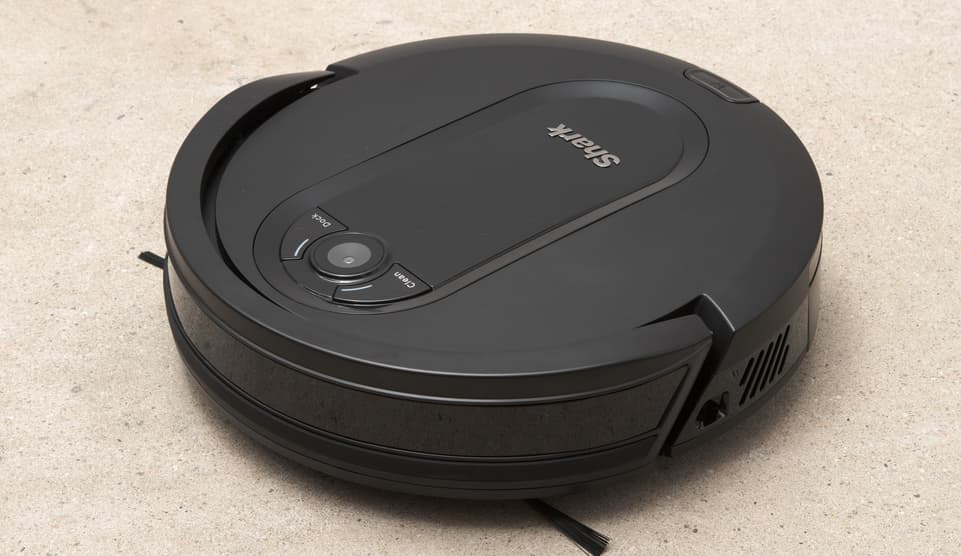Is 256GB Enough for Macbook – As a tech specialist who regularly helps people find the right MacBook, I always caution against settling for the base 256GB of storage.
While appealing for the lower price, going with the bare minimum capacity often leads to regret and headaches down the road. Even light computing uses like browsing, productivity apps, and modest media libraries can quickly exceed 256GB these days.
My advice is to consider at least 512GB of storage or 1TB if you plan on storing substantial photos, videos, or applications. The extra cost up front is worthwhile long-term insurance to avoid constant space anxiety and reliance on inconvenient external drives in the future.
Keep in mind MacBooks are built to last 5 years or more. You may be stuck with your initial storage choice for the lifespan of the computer. And modern MacBook Pro models make aftermarket user upgrades virtually impossible.
Maximize your internal SSD capacity on day one for the best experience. An extra $200-400 when first purchasing saves endless hassles trying to manage a cramped 256GB drive.
As a tech expert, I always remind buyers that sufficient storage brings peace of mind.
Is 256GB Enough for Macbook?

If you’re considering buying a new MacBook Air or MacBook Pro and plan to use it as your primary computer, you should strongly consider a model with more than the base 256GB of storage.
Even bumping up to 512GB of SSD space will benefit you in the long run. Trying to constantly manage storage on a cramped 256GB drive leads to headaches down the road.
MacBooks are built to last. With proper care and maintenance, you can potentially use one for 5 years or longer before needing to replace it.
While performance won’t match the latest models years later, these machines generally remain viable for basic tasks.
But the flip side is you may be stuck with your chosen storage amount for far longer than expected if you don’t plan on frequently upgrading your laptop.
Opting for a skimpy 256GB drive today could leave you frustrated in just 2-3 years as your needs grow. And unlike some rival Windows laptops, you can’t easily swap out the internal SSD yourself on recent MacBooks.
Why You’ll Want More Than 256GB of Storage?
As your primary computer, your MacBook will be home to your personal photo library, music collection, documents, application data, and more.
Here are some examples of how your storage needs can quickly outgrow 256GB over time:
- iPhone/iPad media syncing – If you choose to sync photos, videos, and music from your mobile devices to your MacBook, this content eats up local storage rapidly. Those family vacation videos shot in 4K will monopolize your 256GB SSD shockingly fast.
- iTunes/App Store media purchases – Any music, movies, apps, or other content acquired through Apple’s digital storefronts gets stored locally on your MacBook. This media stash can easily outgrow 256GB over just a few years of routine purchases.
- Adobe Creative Cloud subscriptions – Photographers and creative pros paying for apps like Lightroom, Photoshop, and Premiere Pro will want ample room to install these space-hogging programs. Each can demand 5GB or more of local storage.
- Time Machine backups – You shouldn’t solely rely on iCloud backups for your iPhone, iPad, and other mobile devices. Maintaining local Time Machine backups on your MacBook provides redundancy. However, these backups consume substantial storage, especially for large-capacity phones and tablets.
- General productivity apps – Even if you mostly live in your web browser, productivity suites like Microsoft Office chew through GBs. Throw in utility apps like Slack, Zoom, Adobe Acrobat, and more, and 256GB gets tight quickly.
- Cloud sync services – If you use Dropbox, Google Drive, or other cloud services to sync content from other machines, you’ll want full local copies for convenient access rather than selective downloads. But keeping everything in sync requires local space.
- Active projects – Finally, reserve breathing room for your working files and source material. Editing high-bitrate 4K or 8K video? You’ll keep those massive files on your speedy internal SSD, not an external hard drive.
As you can see from just this partial list, your storage requirements can outpace an entry-level 256GB MacBook’s capacity shockingly fast.
Local vs. Cloud Storage:
Apple encourages customers to embrace the cloud by paying for iCloud storage and using features like iCloud Photo Library. But exclusively relying on the cloud requires you to have internet access to view your full content library.
There are also limits to iCloud’s capabilities:
- Apple only provides 5GB of free iCloud storage, unchanged since 2011. This paltry allotment fills quickly.
- iCloud Backup won’t necessarily retain deleted data like photos or messages forever. Only physical local backups offer complete protection.
- Features like iCloud Photo Library don’t store full-resolution originals in the cloud, instead keeping lower-quality versions locally.
- iCloud Drive and other sync services still require local storage for cached versions of files.
The cloud is a great complementary tool. But for a primarily MacBook, local SSD storage remains critical.
Resist the Temptation of External Drives:
You might think external hard drives or SSDs offer an easy way to supplement your limited internal storage. But this approach has notable downsides:
- Speed – External drives over USB or Thunderbolt can’t match the speeds of your built-in SSD. This leads to lags when reading or writing data.
- Portability – Lugging around and keeping track of external drives is inconvenient compared to built-in storage, especially for a portable notebook computer.
- Durability – External hard drives are prone to failure and damage from drops, liquids or power surges. Your data is safer inside your MacBook’s durable metal housing.
- Clutter – Having external drives cluttering up your workspace or dangling off your laptop isn’t fun. Built-in storage keeps things tidy.
While external storage has its use cases, it shouldn’t serve as your primary repository for apps, media libraries, or active project files when using a MacBook. Paying for ample internal SSD space upfront provides the best experience.
512GB or Larger SSD Recommended
Given how quickly even basic tasks can consume 256GB, we strongly recommend choosing a MacBook model with at least 512GB of storage if possible.
Even better, consider a 1TB SSD or larger if you plan to store substantial media libraries or work with intensive formats like 4K/8K video.
While more storage adds cost upfront, you’ll appreciate the breathing room down the road and extend how long your MacBook remains usable.
Here’s a quick comparison of the extra cost to upgrade from 256GB to 512GB or 1TB of SSD storage on some popular MacBook models:
| Model | 256GB Price | 512GB Upgrade | 1TB Upgrade |
|---|---|---|---|
| MacBook Air M2 | $1,199 | +$200 | +$400 |
| 13″ MacBook Pro M2 | $1,299 | +$200 | +$400 |
| 14″ MacBook Pro M1 Pro | $1,999 | +$200 | +$400 |
| 16″ MacBook Pro M1 Max | $2,499 | +$200 | +$400 |
As you can see, doubling the storage to 512GB only adds $200 to the price across MacBook models. Upgrading all the way to 1TB generally tacks on a reasonable $400. Considering you may use your MacBook for 5+ years, that increment is worthwhile long-term insurance.
Solid state storage prices will continue to decline over time. But the bottleneck of soldered-in, proprietary SSD designs in modern MacBooks means Apple controls pricing for upgrades. Don’t expect equivalent aftermarket parts to arrive anytime soon.
Max out your MacBook’s storage when first purchasing whenever possible. You’ll thank yourself down the road every time you import a batch of high-res photos or work on large video project files without constant space anxiety nagging you. Paying Apple’s premium for more pixels now alleviates storage headaches for years to come.
When Limited Storage May Suffice?
If you plan to use your MacBook as a secondary machine and already have a desktop or home server handling most storage duties, 256GB could potentially work. You’ll have to vigilantly manage the space and not install too many apps or sync large media libraries. However, relying on external and network storage can take pressure off internal capacity.
Likewise, if you mostly just need a MacBook for web browsing, email, document editing, and other light computing on the go, the base 256GB SSD may not pose problems. But even modest photo and music collections have a way of monopolizing space rapidly. Carefully consider if skimping on storage to save money makes sense long-term or risks headaches down the road.
In most cases, erring on the side of more built-in MacBook storage avoids regrets as your needs grow over the computer’s multi-year lifespan. But in certain limited usage scenarios, 256GB could suffice with some external drive supplementation. Only you can judge whether fitting into this category makes gambling on the bare minimum capacity worthwhile.
Key Takeaways on MacBook Storage Needs
To recap, here are some key points to keep in mind when deciding if 256GB is enough MacBook storage for your needs:
- Treat 256GB SSD space as the absolute bare minimum for a MacBook used as your primary computer. You’ll likely want more soon.
- Even basic apps, photos, videos, and other data consume 256GB rapidly. Future-proof with extra capacity upfront.
- Maximize built-in SSD storage rather than relying on external drives or the cloud wherever possible for best performance.
- Consider at least 512GB, or ideally 1TB+ on MacBook models used for photo/video work or large media libraries.
- More SSD capacity extends your MacBook’s viable lifespan by avoiding constant space anxiety down the road.
- Carefully weigh if saving money today is worth the long-term headache of limited storage.
Don’t settle for a frustrating MacBook experience. Investing extra in ample SSD capacity when first purchasing sets you up for smooth sailing rather than constant storage juggling down the road.
Tips to Get Best Deals on MacBooks with More Storage in the US:
Getting a good deal on a MacBook with ample storage requires some savvy shopping. Here are my top tips for finding discounts:
- Check Apple’s refurbished store – Apple sells certified refurbished MacBooks with full warranties. Models are often hundreds less than new, letting you get more storage and still save money. Check the refurb listings regularly as inventory changes rapidly.
- Look for sales around the holidays – Major retailers like Amazon and Best Buy typically discount MacBooks during busy shopping periods like Black Friday, Cyber Monday, and Christmas. Watch for sales letting you score a 512GB or 1TB model without paying full price.
- Don’t pay retail at Apple – Apple rarely discounts new MacBooks. But authorized third-party sellers like Amazon and B&H Photo Video often sell the exact same models for less. Shop around for lower prices.
- Consider open-box listings – If you don’t mind using them, check for open-box MacBook deals from major retailers. For example, Best Buy’s Geek Squad Refurbished products can be steeply discounted. Inspect carefully upon arrival.
- Wait for new releases – When Apple updates the MacBook lineup, older models will get discounted by resellers clearing out inventory. Use this chance to grab a newly obsolete but still potent machine.
- Look for bundle promotions – Some retailers will bundle gift cards or other perks with MacBook purchases around peak shopping periods. Use these amounts to effectively lower the price.
- Use student discounts – College students can save up to $200 on MacBook orders. That discount can make pricey upgrades like 1TB of storage more affordable.
- Don’t rule out financing – Major retailers will let you split your purchase over 12-24 months interest-free. This makes a more specced-out MacBook easier to digest than one lump payment.
With the right shopping strategy, you can find deals that make upgrading to more storage on a new MacBook surprisingly affordable! Let me know if you need any other buying tips.
Top 10 Stores to Buy Macbooks in the USA
Here are the top 10 stores to buy a MacBook in the USA:
- Apple – Purchase directly from Apple online or at one of their retail stores. You’ll pay full price but can customize specs and take advantage of promotions or education pricing.
- Amazon – The online mega-retailer frequently sells MacBooks for less than Apple. Prime shipping and easy returns are a plus.
- Best Buy – Often matches or beats Amazon’s prices both online and in stores. Look for deals during seasonal sales events.
- B&H Photo Video – An authorized Apple reseller popular with pros. Large inventory and periodic discounts make this a top MacBook source.
- Walmart – You can find some surprisingly low MacBook prices at Walmart these days. The retail giant is serious about competing in electronics.
- Target – Don’t overlook big box stores like Target, which sells MacBooks both online and in electronics departments.
- Adorama – Another trusted Apple specialist with competitive MacBook pricing and a site tailored to creative pros.
- Newegg – Better known for PC components, but Newegg stocks many MacBooks at discounted rates.
- eBay – For used or refurbished models, buying from reputable eBay sellers can yield deals. Just inspect carefully upon arrival.
- Abt – Lesser known retailer worth checking for randomly low prices, especially during seasonal sales.
No matter where you shop, be sure to compare prices across multiple vendors. Third-party Apple resellers will almost always beat Apple’s own pricing. And don’t forget to maximize seasonal promotions around back-to-school and the winter holidays for peak savings opportunities!
Conclusion:
Getting a great deal on a MacBook doesn’t have to mean settling for the base model. With the right shopping techniques, you can find discounts and financing offers that make upgrades like 512GB or 1TB of storage more affordable.
Investing a bit more upfront is worthwhile to avoid the headaches of a cramped 256GB drive down the road.
At the end of the day, sufficient storage brings peace of mind. Even if you think 256GB is enough to start, your needs will likely outgrow that capacity sooner than you expect.
My advice is don’t let a tight budget tempt you into a minimalist MacBook. With the storage gains made over the past decade, 256GB is best treated as the absolute minimum for light use cases only.
For most shoppers, more space should be the goal, even if that requires some deal hunting finesse.



